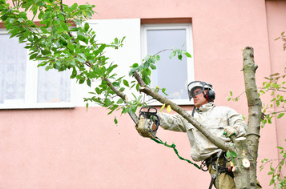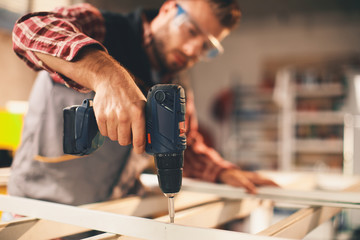 A tree service is a business that maintains the health of trees on residential or commercial properties. The professionals at these businesses know how to trim, prune, and cut trees safely and efficiently. In addition to providing regular maintenance, these professionals also offer emergency services during storms. Contact a professional by clicking here at https://www.prvtreeservices.com/. They can help homeowners clean up fallen branches and restore power lines after a storm.
A tree service is a business that maintains the health of trees on residential or commercial properties. The professionals at these businesses know how to trim, prune, and cut trees safely and efficiently. In addition to providing regular maintenance, these professionals also offer emergency services during storms. Contact a professional by clicking here at https://www.prvtreeservices.com/. They can help homeowners clean up fallen branches and restore power lines after a storm.
Removing Trees
If you have a large tree that is in bad shape, it may be a good idea to hire a tree service. A professional will take a variety of factors into account, including the location of the tree and whether it’s near power lines or other structures. They can also help you decide whether to cut the tree or leave it standing. They can then grind down the stump and clean up the debris. A good tree service will ensure that all work is performed properly and safely, reducing the risk of damage to your property or injury to yourself or anyone else who helps you with the job.
There are many reasons you might need to have a tree removed, from the presence of a dangerous lean to the fact that it’s too close to your house or blocking the view of a street or sidewalk. A tree service can check your tree for problems such as cracks, fungus, rot, or missing bark, and they’ll also know how to tell if a tree is dead or dying.
It’s possible for home and business owners to perform some of the tasks associated with tree removal, but it’s a job that should be left to professionals with the right equipment. When a tree is removed, it usually gets fed into a chipper, where it’s chewed up and turned into mulch. If the tree is too big to remove by hand, it’s then loaded into a log truck for hauling away.
A good tree service will have the proper equipment and experience to remove trees in tight spaces. These spaces include small backyards, narrow alleyways, and building setbacks where it’s hard for equipment to reach. They’ll also know when it makes sense to climb the tree rather than use a machine.
If you’re considering starting a tree service, it’s important to register your business with the local authorities. This will require you to get an employer identification number (EIN), which identifies your business, separates your finances from those of your company, and makes it easier for you to file taxes. It’s also a good idea to get liability insurance for your business, which protects you in case an accident occurs on your property or hurts someone who helps you with the job.
Pruning Trees
The process of pruning involves removing dead branches and trimming back overgrown branches to improve the health, safety, and appearance of the tree or shrub. Properly pruned trees can help increase the amount of sunlight that reaches the ground and reduce the chance of disease and pests infiltrating the trunk. Additionally, pruning can prevent damage to the home or power lines and help keep the trees away from utility wires during storms.
A professional arborist has the training and experience to properly prune your trees. He or she will know how much to remove and where to make each cut without harming the structure of the tree or causing unnecessary stress. Arborists can also provide advice on what type of trees or shrubs would work best in your yard, how to plant them, and when to prune them.
Most landscape trees require regular pruning. Some species, such as elms and spruces, need to be pruned more often than others, while some trees, like fruit trees, only require occasional pruning. A professional tree service will evaluate each tree to determine its needs and recommend a schedule for pruning.
Some reasons to prune a tree include eliminating dead branches, reducing the risk of disease or insect infestation, and preventing damage from winds or snow. Other reasons may involve improving a tree’s shape or addressing visual blight. While it is possible to train a tree into a desired form, it is not recommended that a homeowner try to impose an unnatural shape on a landscape tree, as this can lead to serious problems in the future.
The most common pruning on mature trees is thinning the crown, which involves removing selected live branches to reduce the overall density of the crown. This allows more sunlight to reach the ground and reduces the amount of stress on selected limbs from gravity, wind, or ice. The majority of thinning should be conducted in winter or spring on trees that bloom or produce fruit in summer, such as serviceberry (Amelanchier), redbud (Cercis), fringe tree (Chionanthus), dogwood (Cornus), saucer magnolia (Magnolia soulangiana), and flowering crabapple (Malus). Other species, including spruces and firs, can be pruned anytime during the year.
Treating Trees for Pests
Trees provide beauty and shade to your garden, but they can be susceptible to pests that damage the foliage, branches, or trunk. Many types of insects are harmful to trees, but a few steps taken during regular yard maintenance can prevent infestations that could lead to their death.
An experienced arborist will inspect the health of your shrubs, bushes, and trees to make sure that they can withstand an attack from insect pests. They can advise on the smartest strategies for keeping your landscape healthy and able to resist future invasions by pests.
Some insects defoliate the foliage, while others eat fruit or bore into the trunk and limbs to cut off water flow. Boring and tunneling pests are among the most destructive to trees, as they can wreak havoc on the roots, bark, and vascular system of the tree, killing it in time.
The best line of defense against pests is a healthy tree, one that is well-cared for through fertilization, mulching, and proper pruning. Proper planting and site conditions also help prevent a tree from becoming an easy target for infestations.
Insects like aphids, caterpillars, and mites can cause damage to the leaves and fruits of a tree, while bark beetles eat the bark and wood, causing rot and killing the tree. Sucking pests like aphids, thrips, and spider mites consume sap from the leaves and buds of a plant, and their excrement forms a sticky substance called honeydew that attracts other insects.
There are several things that you can do to reduce the chances of an insect infestation in your trees, including avoiding excessively high moisture levels around the base of the tree. Using mulch and providing supplemental water for the first two years after planting can also help prevent pests.
If an infestation is detected, a professional tree service can take care of the problem quickly and effectively. An arborist will perform a visual inspection of the symptomatic tree and recommend the regimen that is most appropriate for the specific pest and the site conditions.
Falling Trees
Trees are a beautiful addition to any landscape and provide shade, but they can also become a danger during stormy weather. When a tree comes down, it can damage homes and cars and can even cause power outages in the area. A good tree service will check your trees regularly and take care of any problems before they become a threat. They can even help you with tree trimming and removing fallen trees from your property.
Many homeowners do not realize that a falling tree is a serious safety issue until it happens to them. When a tree is weakened by a storm or a disease, it can easily fall and injure someone. To prevent this, tree services can install support systems such as bracing and cabling to strengthen a weak tree and protect it from falling. They can also remove dead or dying trees and grind their stumps to prevent them from growing back.
It is important to find a reliable tree service that has experience working with homeowners’ insurance. This will make the process much easier for everyone involved. It is also a good idea to ask your neighbors for recommendations, as word of mouth can be very helpful when choosing a tree service. The best tree services will be happy to provide references of past clients who were pleased with their work.
If you notice a crack in a tree, it is a sign that it is weakened and may be about to fall. A tree service should be called immediately to inspect the crack and take measures to prevent it from getting worse. They will also check the ground around the tree for signs of weakness, such as sunken roots or soil compaction.
A tree that is close to a house or power lines should be considered an emergency and should be dealt with right away. A tree service will come out to your home and cut down the fallen limbs, or even the entire tree if necessary. They will also clear away any debris left behind by the tree and may even grind the stump if it is too large to dig up.

 While there’s no required education to become a handyman, vocational schools and community college courses in specific crafts can be useful. Some handymen even take up apprenticeships.
While there’s no required education to become a handyman, vocational schools and community college courses in specific crafts can be useful. Some handymen even take up apprenticeships.